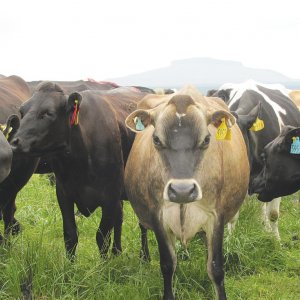Working with the University of Girona in Spain, and Lund University in Sweden, researchers from Eötvös University and Hungary’s Academy of Sciences did field tests with glue-covered boards painted with varying numbers of spots, but always the same ratio of black/brown to white. The more small spots, the fewer flies stuck.
Repeating the experiment with a glue-covered cow model gave the same result: few flies landed on spotty models while a plain dark brown model attracted most flies – 56% of the total. Models with eight spots attracted 26%, an all white one 9%, a 16-spot model 8%, and a 64-spot model just 2%.
The researchers say the result is because Tabanid flies lay eggs in pools of water which they detect because light reflected off water is polarised. Dark-haired cattle hide polarises light more than white so flies are more attracted to darker animals. Reflections off dark parts are at different angles and degrees of polarisation to those off white which when combined on a spotty animal disrupts the attraction.
Tabanids transmit several serious diseases and can disrupt grazing enough to slash milk or meat production.

















